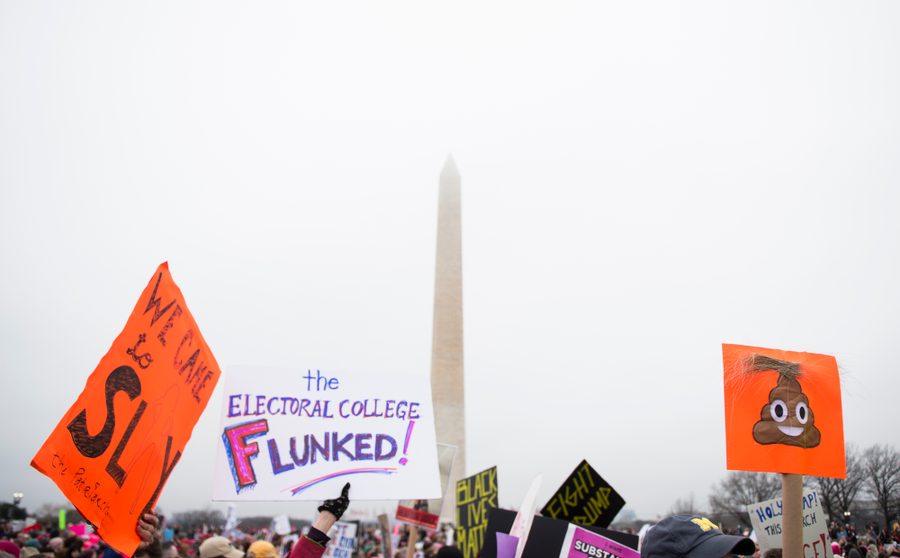The Electoral College Needs to Go. Here’s How States Can Bypass It.
Hillary Clinton and Al Gore both won the popular vote, but lost the election. It’s time for the people to choose who becomes president.
In These Times Editors

Na•tion•al Pop•u•lar Vote In•ter•state Com•pact
noun
1. A state-level agreement that would ensure the national popular vote (not the Electoral College) determines the presidency
“Due to severe racial disparities in certain states, the Electoral College effectively weighs white voters over voters of color, as opposed to a ‘one person, one vote’ system where all our votes are counted equally.” — Rep. Alexandria Ocasio-Cortez (D-N.Y.)
Remind me: Why doesn’t the national popular vote matter already?
The framers of the Constitution believed the unwashed masses could too easily choose the wrong leader, so the idea of a popular vote was out right from the beginning. After a series of compromises (sparked by protest from powerful, people-owning Southerners, who wanted a counterbalance against the more populous Northern states), the Electoral College was born. From that moment, special electors — not the people — would choose the president.
Now at least 58% of voters want the Electoral College tossed in the dustbin of history. An agreement among states to pledge their Electoral College voters to the national popular vote winner could bypass the Electoral College system entirely (without technically getting rid of it, which would require a constitutional amendment).
Wait. The states could do that?
Probably! Each state gets to decide how to award their portion of Electoral College votes. So if enough states pledged their Electoral College votes to the national popular vote winner — they would have to collectively account for at least the 270 votes needed to decide the presidency — then it’s done. And the bipartisan National Popular Vote group has been lobbying state legislatures since 2006 to do it.
Various constitutional and legal challenges would almost certainly arise from the change, but National Popular Vote argues the compact is within states’ Constitutional rights. So far, 15 (mostly blue) states and Washington D.C. are on board, accounting for 196 votes.
How else could we prevent the popular vote winner from losing?
Another workaround would be for every state to just award its votes proportionally, but that seems unlikely. We could also simply add more congressional districts; not only would more people have more responsive representation in Congress, but we would have more total Electoral College votes to go around, which would at least make the nightmare scenario less likely. (The House hasn’t been expanded since 1929, meaning the ratio of voters to congresspeople is as high as it’s ever been.)
The difficulties of the two most recent elections add onto the calamity of Bush/Gore in 2000—so political momentum is building.
This is part of “The Big Idea,” a monthly series offering brief introductions to progressive theories, policies, tools and strategies that can help us envision a world beyond capitalism. For recent In These Times coverage of the national popular vote in action, see, The Electoral College is a Dangerous Relic That Threatens the Future of Our Democracy, Republicans Never Wanted a Fair Fight, and For Democrats, the Road to Victory in 2020 Runs Through Rural America.








